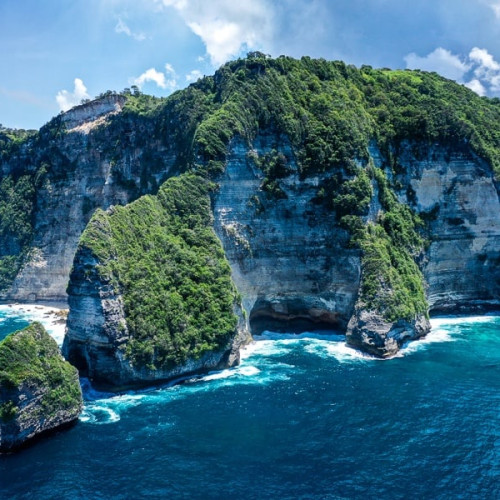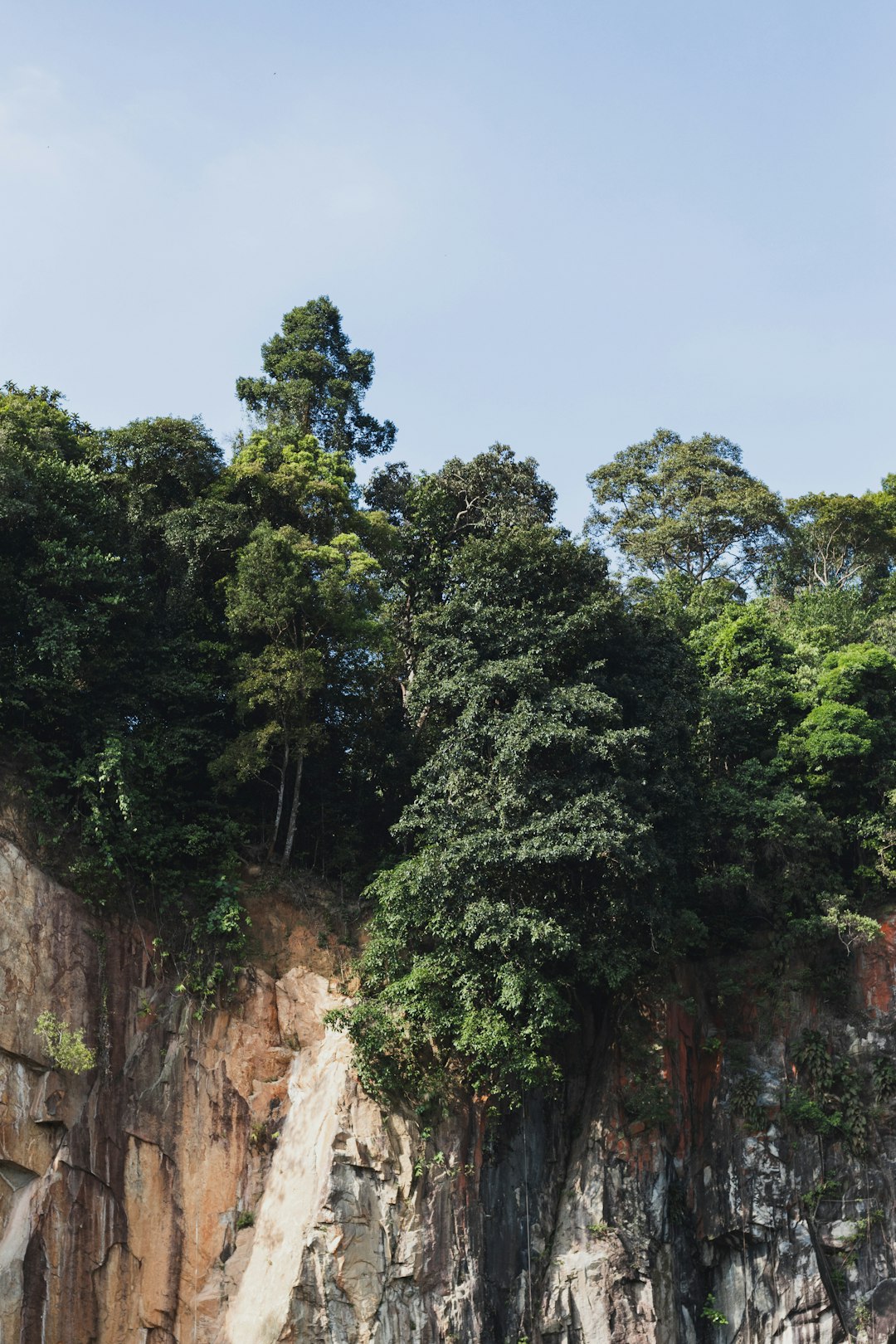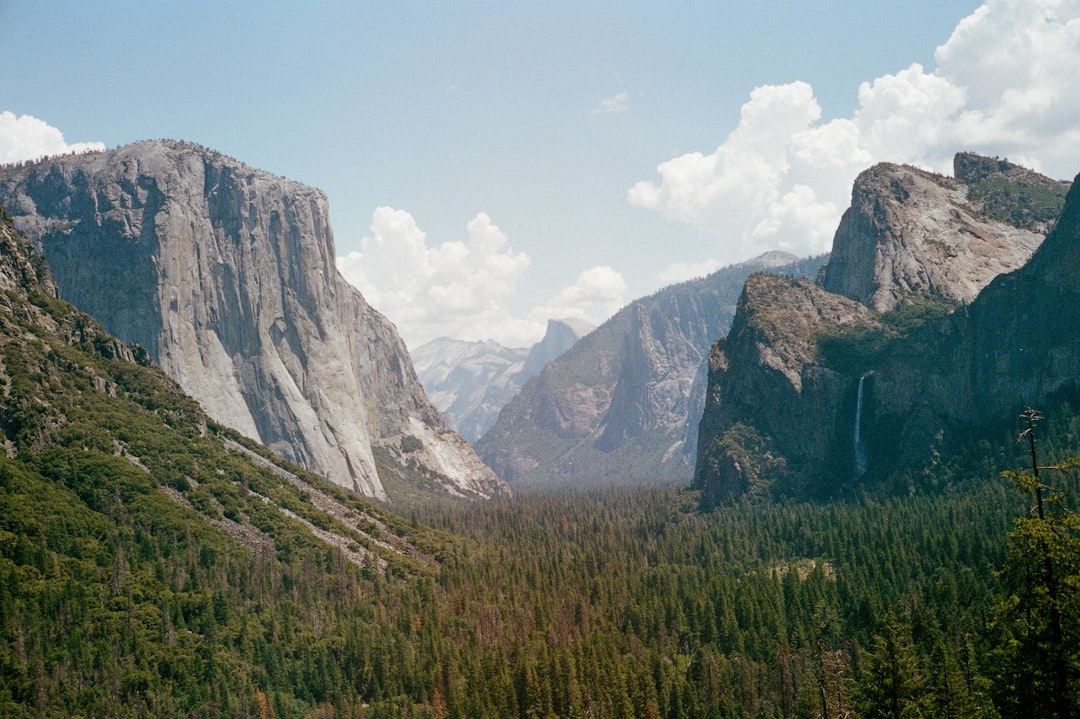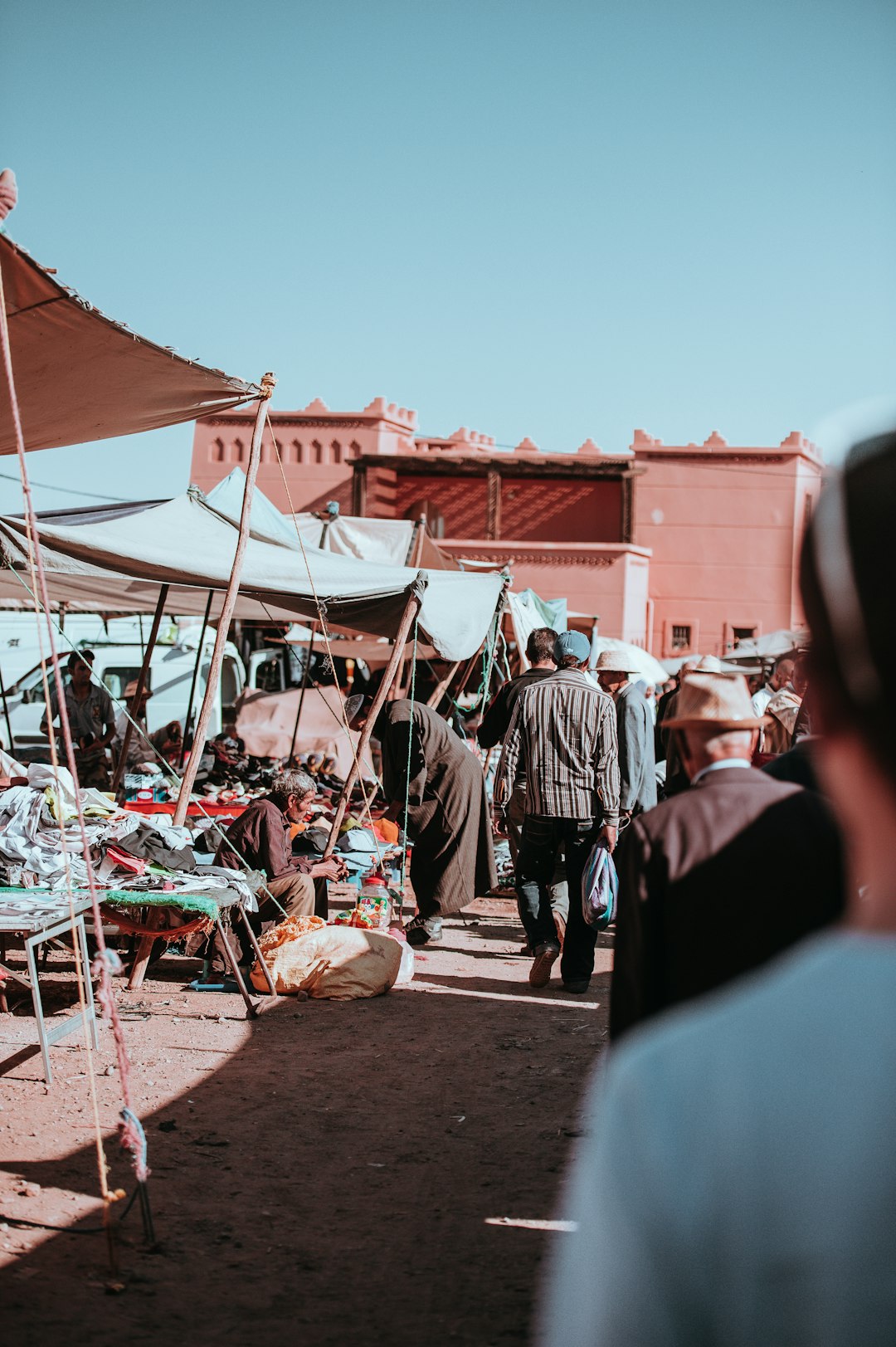Bali has such an amazing variety of things to see and do: jungles, temples, markets, beaches, waterfalls, green rice paddies, and so much more. And if you ever get bored exploring the main island of Bali, there are a bunch of smaller islands nearby like Nusa Penida, with its huge cliffs, scenic coastlines, and great snorkeling opportunities. This 10-day Bali itinerary will guide you through some of the unmissable highlights of the island, starting in the cultural center of Ubud and ending in the beach-filled Bukit Peninsula (also known as the Uluwatu area), along with a few days exploring the top gems on Nusa Penida island! To give some background on this Bali itinerary, my wife is Balinese and we always stay here between our other travels. It’s her home, and my second home, so we’ve spent countless days exploring the island. Some Bali itineraries will tell you to split up your trip and try to spend 2 days in every area of the island. I think that’s crazy, because it’s not enough time to ‘put down roots’ or get familiar with an area, and constantly switching hotels will cut into how much sightseeing time you have! Hence, this Bali itinerary spends 5 days based in Ubud (near the center of the island), 3 days in neighboring Nusa Penida island, and 2 days based in the Uluwatu area (south Bali). This gives you a good setup for exploring sights in central/north Bali, the south peninsula, and a lot of the best things in Penida. For most of the sights on this Bali itinerary, you will need transportation. It’s easy to rent a scooter in Bali, or you can hire a private car with driver for 10 hours of sightseeing. This entire Bali itinerary takes place on Bali island and its smaller neighboring island of Nusa Penida. Fly to Ngurah Rai International Airport (DPS) in Bali, which is served by a bunch of budget friendly airlines with good ratings. AirAsia often has flights from Singapore (SIN), Bangkok (DMK), or Kuala Lumpur (KUL) to Bali for 1 million IDR ($70 USD) or less. Better yet, if you’re located in Australia or New Zealand, you can fly directly to Bali through a number of international airports like Adelaide, Cairns, or Perth, and the costs will be similar. You can shop for flights to Bali at Skyscanner. When you arrive in Bali, take an airport transfer by private taxi to Ubud (you can book this in advance on GetYourGuide). Check in to your hotel in Ubud, and get rested up for the tropical adventure ahead! First things first: the monkeys! Swing by the famous Ubud monkey forest for a funny experience getting your pic taken with the Balinese macaques. There are hundreds of them living in the jungle here, and they’re (mostly) friendly to outsiders. Just up the street from the monkey forest, you’ll find the Ubud art market. It’s full of interesting handmade souvenirs like wood carvings, paintings, coconut bowls, rattan hats and bags, and everything else you can imagine. Feel free to haggle for lower prices, because some of the sellers here start a bit on the high side. On the street corner is this fancy palace from the 1800s, with amazing Balinese stone carvings and courtyards. It’s a quick stop (15 minutes) but very worthwhile! Across the street from the Ubud palace, with just a 3 minute walk you’ll find Saraswati Temple. This one has elaborate doors and walls that make for some great photo spots. Where To Stay In Ubud: Adiwana Unagi (Luxury) or Umah Dajane (Budget) Ubud Monkey Forest Ubud Art Market Ubud Palace Saraswati Temple Bali’s most famous rice terraces are at Tegalalang, just a 15 minute drive north of Ubud. There are foot paths to walk through the whole valley and see the terraces up close. For some reason this is one of the least known temples in Bali, even though it’s one of the most scenic (IMO) and easy to reach from Ubud. It has a nice koi pond, garden, and courtyards to explore, and it’s only a 5 minute drive north from Tegalalang. Tirta Empul is the most famous temple in the Tegalalang area, and one of the most famous in Bali. Tourists and locals alike come here to bathe in the Hindu spring. Even if that’s not your thing, you might enjoy the interesting buildings and the big art market nearby. This is a hidden temple and archaeological site more than 1,000 years old, where you can see ancient funeral shrines carved into the cliffs. It’s a fascinating piece of Bali’s history. By this point you might be feeling templed out. If not, head over to Goa Gajah, a weird looking cave temple from the 9th century. It’s got one of the craziest doorways you’ll see in Bali. Tegalalang Rice Terraces Gunung Kawi Sebatu Water Temple Tirta Empul Temple Gunung Kawi Temple Goa Gajah Temple The Bangli area has lots of great waterfalls and it’s not far from Ubud. Start with Goa Giri Campuhan waterfall, in the north. This one is hidden and you have to sneak through a couple of cool caves to reach it. This is a unique looking waterfall and swimming hole at the bottom of a big ravine in the jungle. It’s a steep hike down, but you can cool off in the natural pools at the bottom. Tibumana used to be a secret waterfall, but it’s exploded in the last couple years and now every Instagrammer comes here. It’s still worth a visit! This is another free waterfall just 500 meters from the entrance to Tibumana. It’s a small 2-step waterfall with no crowds, and you can reach it in 5-10 minutes. Watch out for slippery rocks! Goa Rang Reng has 3 different waterfalls, but my favorite is the first one, a big sloped cascade that looks like a natural Slip N Slide. Goa Giri Campuhan Waterfall Kuning Waterfall Tibumana Waterfall Taman Sari Waterfall Goa Rang Reng Waterfall Drive 2 hours north of Ubud to Sekumpul, one of the biggest and best waterfalls in Bali. The jungle surroundings and rice terraces here are completely epic — sure to be one of the highlights of your time in Bali. This triple waterfall is a free bonus on the same hike. You can reach it with just a 10 minute walk from the Sekumpul waterfall. This pagoda temple in the middle of a lake is one of the most iconic photo spots in Bali. Even cooler is the fact that the lake it sits on is a former caldera (volcanic crater), and it’s the 2nd biggest lake in Bali. You might not see this place on many Bali itineraries, but we loved it and it’s very close to the lake temple. Some of the trees and plants here look like they’re straight out of Jurassic Park. The highlight is a huge Banyan tree that may be hundreds of years old. Drive south to Jatiluwih, where you’ll find some of the biggest and best rice fields in Bali. Take one of the trekking paths through the rice terraces and enjoy the views! Sekumpul Waterfall Fiji Waterfall Ulun Danu Bratan Temple Bedugul Botanic Garden Jatiluwih Rice Terraces Hire a private driver for day 5 and head south from Ubud to Sanur, checking out some places on the way. First stop: Mas wood carving village. Balinese wood carvings are some of the best in Southeast Asia, and the carvers at Mas are known for being top notch. Warning though, some of these can be very pricey. Research and haggle before you buy. This is a small park with hundreds of butterflies, but the best part is getting to hold an Atlas Moth, the biggest moth in the world. They also have giant stick bugs from Borneo. Tegenungan is the busiest and most touristy waterfall in Bali. Don’t go here to escape the crowds, but it’s still a nice spot for lunch, and you’ll be driving past it anyway! This park has more than 1,000 birds and reptiles ranging from tropical parrots to Komodo dragons. The grounds have an ancient ‘Angkor Wat’ theme that fits perfectly with the wildlife, and everything is very well managed. If the bird park’s not your thing, you can swap this with Batuan Temple (which is also nearby). Drive the rest of the way to the Sanur area (20-30 minutes from the bird park) and check in to your next hotel. Get rested up and ready for the morning boat crossing to Nusa Penida island! Where To Stay In Sanur: Andaz (Luxury) or Blanjong Homestay (Budget) Balinese Wood Carvings Kemenuh Butterfly Park Tegenungan Waterfall Bali Bird Park Get up early and take a morning boat from Sanur to Nusa Penida. The journey by speedboat only takes about 45 minutes or so. Once you arrive in Penida, hire a scooter or meet up with your Nusa Penida driver and get started sightseeing! Start the day off at this epic cliff spot, one of the most photogenic and popular views anywhere in Bali. If you’re up for a real challenge, hike down to the beach and back up, but bring plenty of water! Just a short distance from the famous Kelingking cliff is this alternate viewpoint with a lot less crowds. It’s very easy to visit and only adds a few minutes to your Bali itinerary! This is another cliff spot that most tours pass up. If you’re interested, there’s a steep trail down to the bottom, where you can chill in a nice natural pool. This is a hidden gem, a very short hike with a great payoff. Follow the stairs down to the west edge of the cliffs and you’ll get an amazing view of the doughnut shaped Banah rock and the white cliffs. End the day with a trek down to Tembeling Beach. You can do the whole hike on foot, or hire a motorcycle taxi to take you down and back up. There’s a refreshing natural pool at the bottom, and a sea cave that opens up to a view of the huge cliffs above. Where To Stay In Penida: MAUA Hotel (Luxury) or Unicorn Bungalow (Midrange) Speedboat from Bali to Nusa Penida Kelingking Beach Paluang Cliff Pererenan Cliff Banah Cliff Point Tembeling Beach Day 7 is about incredible beaches. Enjoy the views of Diamond Beach from the overlook, and then walk the stairs down to the white sand. I think this is one of the most amazing beaches in the world. Just a 2 minute walk from Diamond Beach is another one called Atuh Beach. This one may not be as ‘Instafamous’ but it’s still a great place to relax on the sand and get some food and drinks. This group of 3 wooden tree houses sits right next to Diamond Beach, just a 5 minute drive away. It’s an epic location and you can even stay the night in one of the tree houses if you want! This is a nice pull off spot you can hit on the drive north from the Diamond Beach area. The cone shaped ‘Teletubby’ hills are best seen shortly after the rainy season, when they’re a bright green color. This is a Hindu temple inside of a big cave. You have to crawl through a tiny opening in the rock to access it, but the inside is way bigger than you might expect. It’s fascinating, and a nice change of pace from the other things on this itinerary. Diamond Beach Atuh Beach Rumah Pohon Treehouse Teletubbies Hill Pura Goa Giri Putri Cave Temple Wake up early for a 2-3 hour snorkeling tour on the west side of the island. Shared tours cost about 150k IDR per pax and this can be arranged with Nusa Penida Explorer (☎ +62 818-0533-3747). You’ll see rainbow corals, nemo fish, and maybe some manta rays and turtles if you’re lucky! Back on the road again! This is a multicolored tide pool that you can swim and soak in when the tide is low. Just watch out for high tide, because it can be risky here when the waves get really big. This is another natural wonder: a horseshoe shaped bay carved out of the coastline. Sometimes you can even see manta rays floating around here on the surface of the ocean. This is a nice sunset beach with easy access, lots of sunbeds, and lined with food and drink shacks. Perfect place to wind down after a whirlwind tour of Penida island! Head back to the harbor and take an evening boat from Nusa Penida back to Sanur. Once you arrive in Bali, drive south to the Uluwatu area and check in to your new hotel to prepare for the next leg of this Bali itinerary. Snorkeling Gamat Bay Angel’s Billabong Broken Beach Crystal Bay Speedboat back to Bali from Nusa Penida Head over to the southwest coast of Bali and check out Balangan, a beach with soft white sand. There’s also a cliff above the beach, where you can get amazing views of the blue water and the coastline. Even though this beach is hidden at the bottom of a cliff, it’s a popular spot and it can get pretty crowded by noon. It has nice white sand, good surfing, and more monkeys! Everything you need for a good time. This is a beach hidden in a cave, but my favorite part is the restaurant above, where you can grab drinks with a great view of the cliffs along the coast. This temple sits on the edge of a big cliff and it’s one of the most popular places in Bali to watch the sunset. Hide your sunglasses! The monkeys at Uluwatu Temple are known for trying to snatch anything they can. Where To Stay In Uluwatu: Green Escape Resort (Luxury) or Tempekan Hotel (Midrange) Padang Padang Beach Suluban Beach restaurant Uluwatu Temple This is another steep cliff near Uluwatu, except with way less people and no safety fences to block your view of the waves crashing on the rocks below. It’s a nice quick stop for day 10 of your Bali itinerary. Nunggalan is one of my favorite beaches in Bali. It’s an exhausting hike down the cliffs, but you’re rewarded with a huge beach mostly to yourself, and there’s even a cool shipwreck for taking photos. Green Bowl is another nice white sand beach with a couple of big caves, and it’s also a great spot to watch the sunset. The only catch is that it requires going down more steep stairs. Oneeighty is the coolest club in Bali, with an epic glass pool that sits on the edge of a cliff. The pool is part of a luxury hotel, but for a fee you can use the pool all day and that includes a food and beverage credit. Great place to wrap up your Bali trip! Karang Boma cliff Nunggalan Beach shipwreck Green Bowl Beach Oneeighty Cliff Pool I hope this Bali itinerary was helpful for planning your own trip. Don’t forget to check out my full Bali Travel Guide and Nusa Penida Travel Guide with free tips, info, photos, and more! The Kayon Resort Adiwana Unagi Suites Pondok Serayu Umah Dajane Guesthouse If you want to explore Bali in the comfort and safety of a private car with a driver, my top recommendation would be GetYourGuide. Their price is 675k Rupiah ($47 USD) for a full day of driving and sightseeing in Bali (up to 10 hours) for 1-5 passengers. That’s the total price for the whole car + driver + petrol! It’s a great deal. You can also hire your Nusa Penida private driver through this company. We’ve used GetYourGuide for lots of tours and activities around the world, and they’re great! Highly recommended. The best time to visit Bali depends on what you’re looking for: ☁ Bali’s rainy season runs from November to April. The weather during the day can be hot and humid at 90-95 °F (32-35 °C), but it’s less crowded during this time, and the rain is mostly at night. ☀ From May to August, the temps are a lot cooler, and it’s more breezy and sunny. This is the nicest weather. It’s also the high season, so it’s generally more crowded. The sights on this Bali itinerary are spectacular at any time of the year, but I personally think the best months for photography are March to May (right after the rainy season ends), when most of the island is covered with green foliage.










